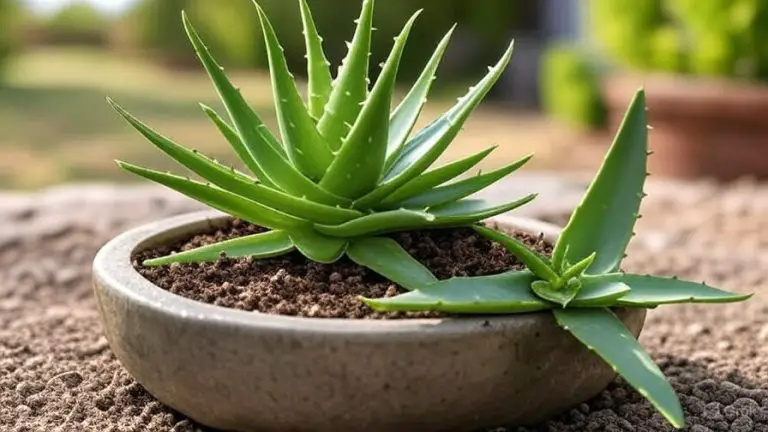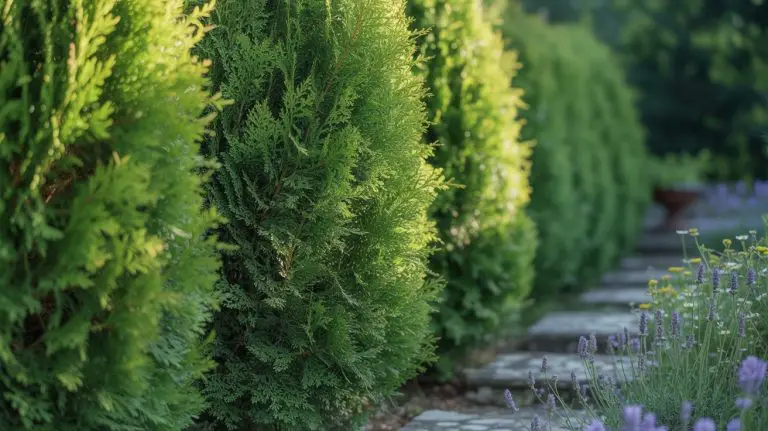Linden Tree Droppings: A Comprehensive Guide
Linden trees, scientifically known as Tilia, are deciduous trees commonly found in North America, Europe, and Asia temperate regions. These majestic trees are admired for their attractive foliage, fragrant flowers, and the valuable shade they provide.
One notable characteristic of linden trees is their droppings, which play a significant role in the ecosystem and can have both benefits and drawbacks for homeowners and gardeners.
In this article, I’ll tell you all the benefits and drawbacks of Linder tree droppings.
What's On the Page
- 1 Understanding Linden Tree Droppings
- 2 Why Do Linden Trees Produce Droppings?
- 3 The Role of Linden Tree Droppings in Wildlife
- 4 Seasonal Variations in Linden Tree Droppings
- 5 The Benefits of Linden Tree Droppings
- 6 Managing Linden Tree Droppings
- 7 3. Leaf Blowers and Vacuums
- 8 the Beauty of Linden Tree Droppings
- 9 Drawbacks of Linden Tree Droppings
- 10 1. Aesthetic Concerns
- 11 Frequently Asked Questions
- 12 Conclusion
Understanding Linden Tree Droppings
Linden tree droppings refer to the various materials that fall from the tree throughout the year. These droppings typically consist of leaves, flowers, bracts, twigs, and small fruits. They can create a natural layer of organic matter on the ground, which serves as a valuable nutrient source for the soil.
Why Do Linden Trees Produce Droppings?
Understanding why linden trees produce droppings can give us further insights into their significance. Linden trees are known for their abundant foliage and beautiful flowers.
During the spring and summer months, linden trees produce an abundance of leaves and blossoms.
As the seasons progress, the tree naturally sheds these materials as part of its life cycle. This shedding process helps the tree conserve energy, especially during the colder months when it goes into dormancy.
The Role of Linden Tree Droppings in Wildlife
Linden tree droppings not only benefit the tree and the soil but also play a vital role in supporting local wildlife. The fallen leaves and other organic materials provide a natural habitat for insects, worms, and microorganisms.
These organisms contribute to the decomposition process, breaking down the droppings and enriching the soil with their waste products.
In turn, this attracts a variety of birds and small mammals that rely on insects and microorganisms for food. The linden tree droppings, therefore, contribute to a healthy and balanced ecosystem.
Seasonal Variations in Linden Tree Droppings
Linden tree droppings can vary in quantity and composition throughout the year. Here’s a breakdown of the seasonal variations:
Spring
During springtime, linden trees produce an abundance of fresh leaves and flowers. The leaves are typically bright green and offer a vibrant display. These fresh leaves and blossoms are likely to constitute the majority of the droppings during this season.
Summer
In summer, the linden tree droppings consist of both mature leaves and flowers that have completed their life cycle. The leaves may gradually turn darker in color, and the flowers may dry up and fall off, contributing to the droppings on the ground.
Fall
As fall approaches, linden trees shed a significant number of leaves as they prepare for winter dormancy. The droppings during this season primarily consist of dry and colorful leaves, which create a picturesque scene on the ground.
Winter
During winter, the droppings from Linden trees are relatively minimal. Since the tree is in a state of dormancy, there is less foliage to shed. However, occasional twigs, small fruits, and bracts may fall and contribute to the droppings.
The Benefits of Linden Tree Droppings
1. Organic Mulch
When linden tree droppings decompose, they form a layer of organic mulch that helps retain moisture in the soil. This mulch acts as a natural insulator, preventing extreme temperature fluctuations and reducing the need for frequent watering.
2. Nutrient Cycling
As the droppings break down, they release essential nutrients back into the soil, enriching it and supporting the growth of other plants in the vicinity.
3. Erosion Control
The layer of linden tree droppings acts as a protective barrier against erosion caused by heavy rains or wind.
Managing Linden Tree Droppings
While linden tree droppings offer many benefits, their accumulation can also pose challenges, especially in residential areas. Here are some tips for managing the droppings effectively:
1. Raking and Composting
Regularly rake up the fallen leaves and other droppings to keep the area clean and prevent them from smothering the grass or other plants. Consider composting the collected material to create nutrient-rich compost for your garden.
2. Mulching
If you have flower beds or garden areas beneath Linden trees, apply a layer of fresh mulch to suppress weed growth and retain moisture. This will also help integrate the fallen droppings into the soil more quickly.
3. Leaf Blowers and Vacuums
Using leaf blowers or vacuums can be an efficient way to gather and remove linden tree droppings from larger areas. These tools allow for quick cleanup while minimizing physical effort.
the Beauty of Linden Tree Droppings
While managing linden tree droppings is essential for maintaining a tidy outdoor space, it’s also worth appreciating their unique beauty and ecological value.
The vibrant colors of the leaves in the fall, the delicate flowers scattered on the ground, and the sound of leaves crunching underfoot can create a peaceful and natural ambiance in your garden or park.
Drawbacks of Linden Tree Droppings
While linden tree droppings offer numerous benefits, it’s important to acknowledge and address potential drawbacks that may arise from their accumulation. Here are some considerations:
1. Aesthetic Concerns
The accumulation of linden tree droppings on lawns, sidewalks, or driveways can be visually unappealing. The layer of fallen leaves, twigs, and small fruits may give the impression of an unkempt or untidy outdoor space.
This can be particularly problematic for homeowners who value a well-maintained and manicured appearance.
2. Maintenance Efforts
Raking and cleaning up linden tree droppings can be a labor-intensive task, especially during peak shedding periods. The regular removal of fallen leaves and other debris requires time and effort.
This additional maintenance may become a significant consideration for individuals with limited mobility, physical limitations, or busy schedules.
3. Potential Hazards
Accumulated linden tree droppings on walkways or driveways can create slippery surfaces, posing a risk of falls or accidents, particularly when wet or in icy conditions.
It’s important to exercise caution and take necessary precautions to ensure the safety of individuals walking on or near areas affected by the droppings.
4. Interference with Other Plants
If you have a garden or landscaped areas beneath or near Linden trees, the droppings may smother or inhibit the growth of other plants. The dense layer of fallen materials can block sunlight, restrict airflow, and compete for nutrients with the surrounding vegetation.
This interference may require additional care and maintenance to preserve the health and vitality of the desired plants.
5. Allergies and Sensitivities
For individuals with allergies or sensitivities to pollen or certain tree species, the presence of linden tree droppings may cause discomfort or allergic reactions. The airborne pollen released during the flowering season can be a particular concern for those with respiratory conditions or allergies.
Frequently Asked Questions
Are Linden tree droppings harmful to my garden or lawn?
No, linden tree droppings are not harmful to your garden or lawn. In fact, they can provide valuable nutrients to the soil as they decompose. However, excessive accumulation of droppings may smother or compete with other plants, requiring regular maintenance and management.
Can I use Linden tree droppings as mulch?
Yes, linden tree droppings can be used as a form of mulch. As the droppings decompose, they contribute organic matter to the soil and help retain moisture. However, it’s recommended to compost the droppings first to facilitate the breakdown process and ensure a more uniform application.
How often should I clean up Linden tree droppings?
The frequency of cleaning up Linden tree droppings depends on your preferences and the amount of droppings in your area. Regular maintenance, such as raking or using leaf blowers, is typically performed during the shedding seasons of spring and fall. However, it’s advisable to monitor the accumulation and adjust the cleaning frequency accordingly.
Can Linden tree droppings attract pests?
While linden tree droppings themselves do not attract pests, they can create a favorable environment for certain insects, such as beetles or slugs, if the droppings are not regularly cleaned up. To minimize the risk of attracting pests, ensure proper sanitation by promptly removing fallen droppings from areas where pests could become a concern.
How can I prevent Linden tree droppings from clogging my gutters?
To prevent Linden tree droppings from clogging your gutters, consider installing gutter guards or screens. These devices can help prevent leaves, twigs, and other debris from entering and clogging your gutters while allowing water to flow freely.
Conclusion
Linden tree droppings, though sometimes requiring management, bring numerous benefits to both the tree and the surrounding environment. By understanding their role and implementing proper maintenance techniques, you can maintain a healthy and beautiful outdoor space while making the most of the natural materials provided by these magnificent trees.
Remember to consider the needs of your particular landscape and seek professional advice when necessary to ensure the best possible results.
- Growing Baobab Trees Indoors: Complete Care Guide - July 10, 2025
- Why Are My Banana Tree Leaves Breaking? A Complete Guide to Prevention and Care - July 10, 2025
- Banana Plant Leaves Turning Black: Complete Care Guide - July 10, 2025



